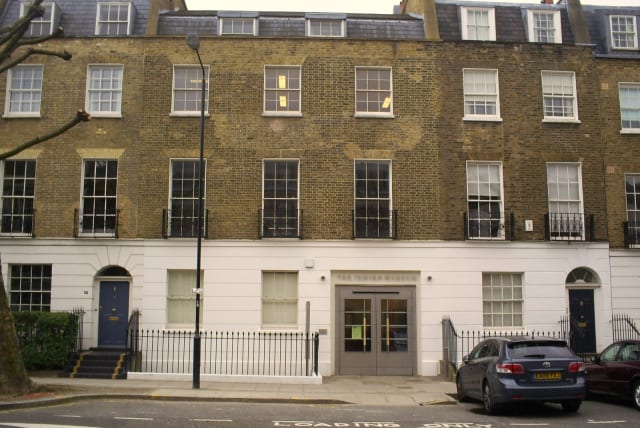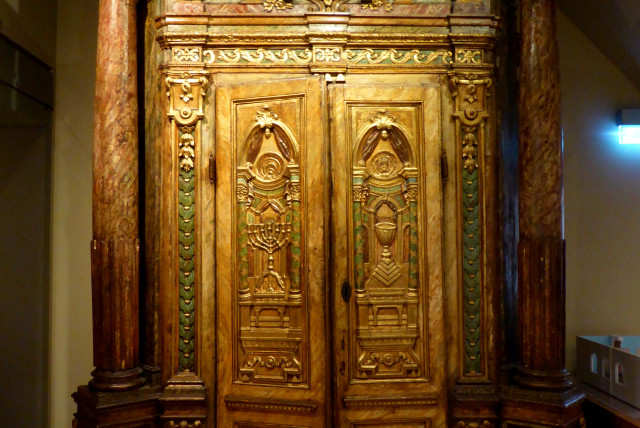London Jewish Museum to close indefinitely, look for new location

The Jewish Museum intends to close its doors at the end of June and be out of its current building on Albert Street by the end of the year.
London’s Jewish Museum is to close indefinitely next month and begin hunting for a new home for its collection of 40,000 objects, one of the largest of its kind in Europe.
The rising costs of maintaining its current premises in northwest London and a difficult fundraising environment exacerbated an already precarious financial situation for the museum, its chairman Nick Viner told the Jewish Telegraphic Agency. The Jewish Museum intends to close its doors at the end of June and be out of its current building on Albert Street by the end of the year.
Viner said that the museum had been working on a “vision for the future” that would have seen it move to a building better tailored to the institution’s needs, but that the board had decided that it was no longer possible to make that transition seamlessly.
“We realized that it wasn’t possible to fund the ongoing museum, where the costs were going up significantly, and to focus on a future,” he explained. “We decided that we would pause — move out of the building, sell it, and use the funds to help us over the next period, so that we can continue to operate in a transition mode.”
Jewish Museum had been struggling for a while

The Jewish Museum, which had been struggling even prior to COVID-19, was forced into restructuring and layoffs during the pandemic, and it pivoted heavily towards educational programs.
Those programs will continue, and the museum also intends to operate temporary exhibitions in smaller spaces around London, while the rest of the collection is put in storage or loaned temporarily to other institutions.
“There is an opportunity to have parts of the collection that haven’t been seen be accessible to people in different parts of the country, which could be very exciting,” Viner said. “We are just starting to look at how it would work practically, and whether others can house parts of the collection safely.”
Among the rare objects that risk slipping out of view are the oldest Hanukkah menorah made in Britain, which has been displayed since the museum was founded in 1932, and a 17th-century Venetian synagogue ark. The Jewish Museum also houses collections from the Jewish Military Museum, the United Synagogue and the Jewish Historical Society.
But the institution’s small building meant that only 5% of its objects were displayed. It has historically also had a smaller profile than its counterparts on the continent, which operate largely based on public funding and have become more firmly entrenched on both Jewish and non-Jewish tourists trails and local cultural scenes.
“We are very conscious that the U.K. has the second largest Jewish community in Europe and that London’s museum is both very small and a very different kind of space from some of the great Jewish museums around Europe,” said Viner. “We feel that we have so many fantastic stories to tell and so much to show that we ought to have a museum that reflects that, but it will only work if the community is ultimately supportive.”
The museum will have to rely heavily on donors within the Jewish community to ensure its long-term future, as funds from the Arts Council England, a British government-funded body, are insufficient on their own to ensure its sustainability.
Recent records show that in the twelve months up to March 2022, the revenue of the Jewish Museum was hovering at just over a third of pre-COVID levels. The museum was granted National Portfolio status by Arts Council England last year, a label that provides it with a stream of over $280,000 a year until 2026. It had previously received an injection of over $1 million by the Arts Council during the pandemic.
“There is always a risk when you don’t have the fundraising that you cannot continue,” added Viner, who said that it was still uncertain how much the Jewish Museum was looking to raise. “There are different models. It could be a very significant amount, or it can be smaller depending on the scale and the nature of the [future] building. I wouldn’t want to put a future on it.”
While there is currently no specific location in mind for a future site, there is an understanding that an area with more foot traffic is vital. The current site, on a side street, is unlikely to be noticed by many curious tourists or long-time Jewish residents of London. There is also a hope that any future site, whether newly built or purchased, would have outdoor space and permit greater flexibility than the Albert Street building.
The Jewish Museum moved to Camden in 1994. Its current home has been the same since 2010, when it purchased a former piano factory behind the site and remodeled and combined the buildings.
The museum, which had previously put on widely acclaimed exhibitions on Amy Winehouse, Jewish cartoonists and Jewish soccer history in Britain, had also not been able to put on temporary exhibitions since the pandemic because of the cost.
“Exhibitions and work with our collection is a lot more expensive,” said Viner. “We believe that education is really important, but we also have a fantastic collection and lots of stories to tell. We need to find a way to do that too.”
Jerusalem Post Store
`; document.getElementById("linkPremium").innerHTML = cont; var divWithLink = document.getElementById("premium-link"); if (divWithLink !== null && divWithLink !== 'undefined') { divWithLink.style.border = "solid 1px #cb0f3e"; divWithLink.style.textAlign = "center"; divWithLink.style.marginBottom = "15px"; divWithLink.style.marginTop = "15px"; divWithLink.style.width = "100%"; divWithLink.style.backgroundColor = "#122952"; divWithLink.style.color = "#ffffff"; divWithLink.style.lineHeight = "1.5"; } } (function (v, i) { });
